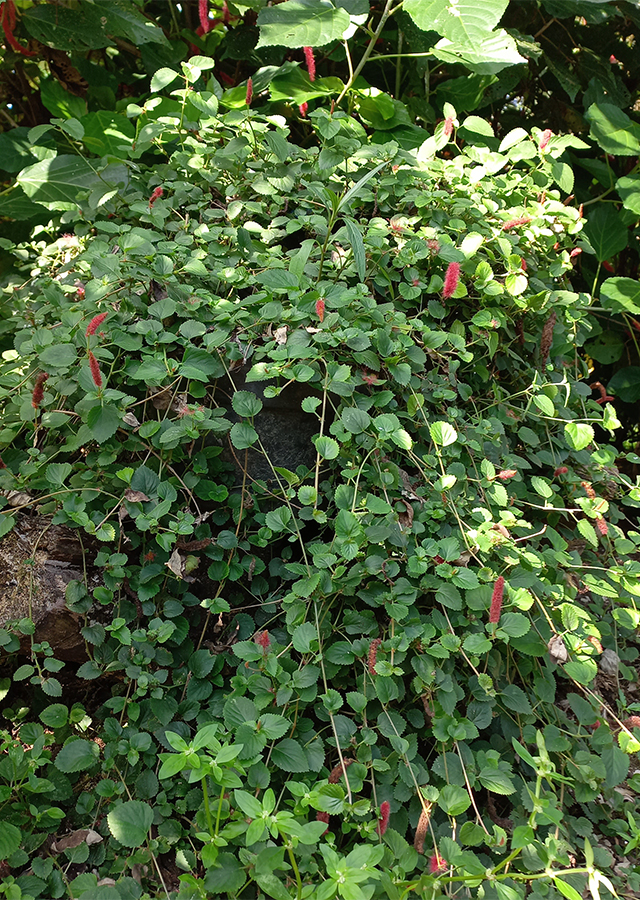Traditional Herbs from Acalypha chamaedrifolia
dysentery
- Prepare enough fresh mini cat's tail flowers then wash them with running water until clean.
- Boil the mini cat's tail flowers\u00a0until they boil.
- Let it warm\/cold.
- Strain and drink .
What is Acalypha chamaedrifolia Looks like??



Parts of Acalypha chamaedrifolia that could be used
- Flowers", "All Parts of the Plant
Acalypha chamaedrifolia Distribution
Mini cattail is a species of flowering plant native to South Florida and the Caribbean, also found in the Bahamas, Cayman Islands, Cuba, Dominican Republic, Florida, Haiti, Jamaica, Leeward Islands, Puerto Rico, Windward Islands. This plant can be used as an ingredient in commercial cosmetics which functions as a hair and skin conditioner. This species is widely planted by people as an ornamental plant, because it has a unique flower shape that resembles a cat's tail and is small in size. This species is generally grown in pots or hanging baskets.Agroecology of Acalypha chamaedrifolia
The mini cat's tail plant is a flowering plant that grows very quickly. This species can be found in rocky pine forests and disturbed areas, at altitudes between 10 - 1,400 m above sea level. Able to grow well in areas with average rainfall between 1,000 - 2,500 mm per year, in partially shaded positions or in full sun, as well as moist and well-drained soil conditions.
Morphology of Acalypha chamaedrifolia
- Cylindrical stem, round, green.
- Leaves are single, ovate and have a rounded base and sharp apex and are arranged in pairs and opposites along the stem, the edge of the leaf is crenate-toothed, the veins are pinnate , covered with hairs, green in color.
- Sessile flowers are borne on terminals, the inflorescences are cylindrical racemes like cat's tails and the male flowers are very small, short-stemmed, round in shape bud, calyx divided into 4 small valve sepals, stamens on a slightly raised receptacle, filaments free or basally connected, female flowers generally sessile or subsessile, calyx from small sepals imbricate, ovary 3 carpels, surface often muricate, pubescent or papillose, reddish hue.
Cultivation of Acalypha chamaedrifolia
Propagation is done generatively (seeds) or vegetatively (stem cuttings).
Acalypha chamaedrifolia, more details :
Chemical Content of Acalypha chamaedrifoliaInformation not found. Need further investigation.
Benefits of Acalypha chamaedrifolia
Helps treat diarrhea, dysentery, ingredient in commercial cosmetic preparations (hair and skin conditioner), has antioxidant activity.
Simplisia of Acalypha chamaedrifolia
Another Facts for Acalypha chamaedrifolia :
Synonym of Acalypha chamaedrifoliaAcalypha reptans Sw., Acalypha adscendens Hornem., Ricinocarpus chamaedrifolius (Lam.) Kuntze
Habitus of Acalypha chamaedrifolia
Herb. Annual herb, height between 10 - 50 cm
Habitat of Acalypha chamaedrifolia
- Mainland
No comments:
Post a Comment